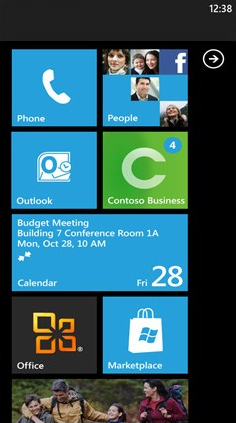Windows Phone 7
Published:
Windows Phone 7. It’s a new operating system for phones.
“Windows Phone 7 is easily the most unique UI in the smartphone race right now, and the real perk here is that it doesn’t just seem like an arbitrary decision to make things look different than other OSs — there is real purpose and utility to a lot of what Microsoft has come up with.” – Engadget
My last Windows phone was a while ago, when I was still in secondary school. It was the HTC Typhoon (Orange C500), and I absolutely loved it. Outlook is without a doubt one of the best applications ever produced by Microsoft in my opinion, and I used it to organise my whole life. Email, calendar, contacts and todo lists were all organised in Outlook, and with the C500, I could take them all with me.
This was, of course, back in the days where a secondary school student would be on PAYG and not even go near using a mobile for data, so everything I did would have to be synced with my computer and the my computer would handle the updating of Outlook. With data rates on mobiles now within almost everybody’s price range, there’s so much more you can do with a smartphone.
Most smartphones, like the Android and the iPhone, work around an idea that a smartphone is just a phone that runs applications. It’s a step in the right direction, but Windows Phone 7 goes futher. Let’s look for instance at the home screen:

The Windows Phone 7 Home Screen
Yes, the applications are there, but it’s more than that. It’s not just a list of applications, and a list of folders containing more applications. Everything on the home screen is dynamically updated to show you the information you want without having to open the application.
For example: you’ll see the next entry on your calendar so a quick glance at your phone can tell you where you need to be without fiddling about with it.
The home screen is easily customised so you can have the “tiles” that matter most to you available, constantly updated, whenever you need them.
The address book is one of the most used features on my phone, and Windows Phone 7 has made it even more useful. Not only do you have your mobile contacts, but online contacts too. The “people hub” can keep you in touch with your friends on Facebook, let you update your status on multiple social networking sites, as well as let you call and text your friends.
The “music” hub is very similar, from what I’ve seen, to Windows Media Center. I use my phone as a music player as I don’t like to be carrying around more devices than I have to, for one thing, it’s just something else to remember to charge. The phone can wirelessly sync with your music library on your PC so you’ll always have your latest, up-to-date, music collection on your phone. WP7 phones should also have a FM radio so you can listen to that too.
Obviously this post is not exhaustive of what you can do with Windows Phone 7, but hopefully I’ve got you interested. You can find out more information:
http://www.microsoft.com/windowsphone/en-us/features/default.aspx